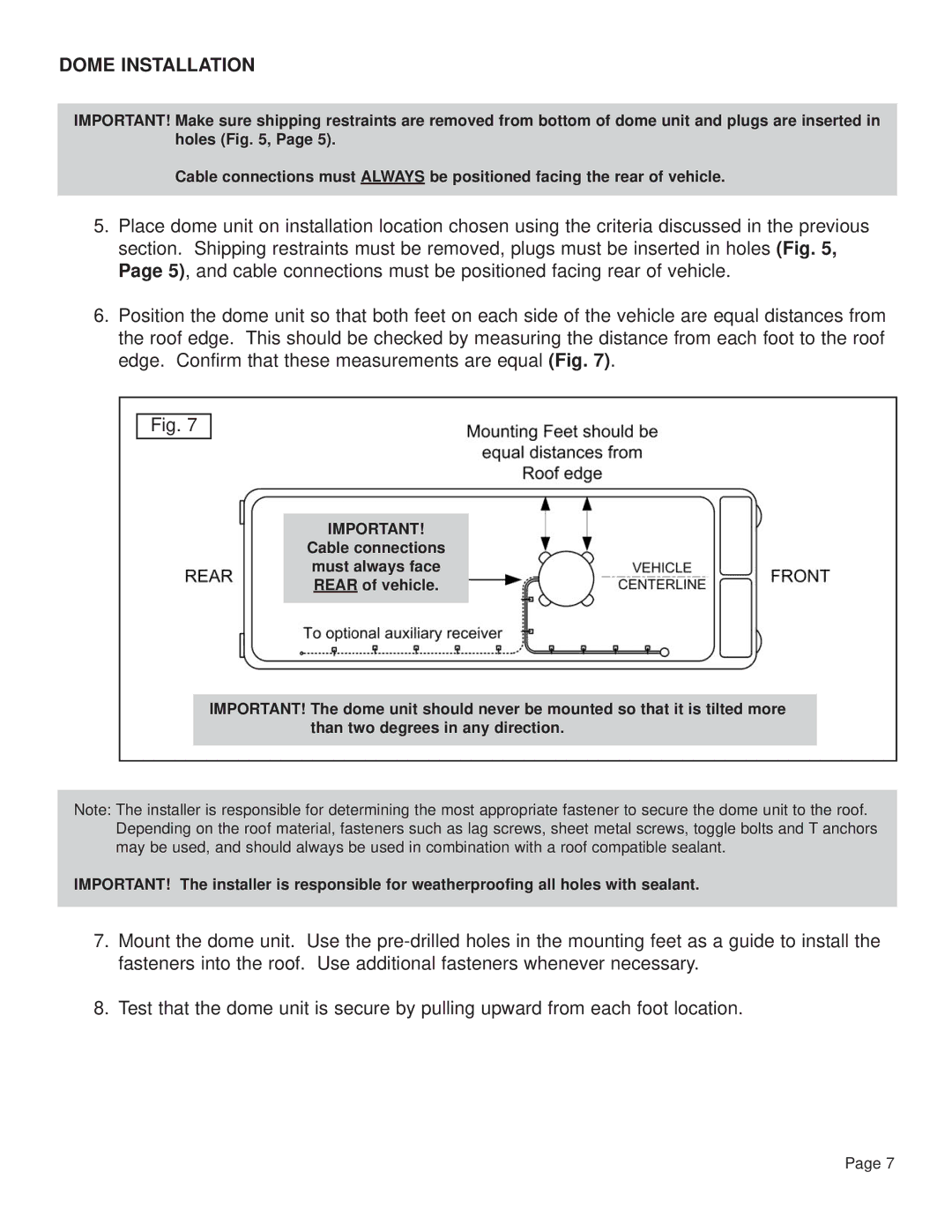KD-3200, KD-2200 specifications
The King Controls KD-2200 and KD-3200 are innovative satellite TV systems designed to provide exceptional entertainment on the go. These portable dome antennas are ideal for RVs, campers, and mobile homes, delivering reliability and high-quality TV reception wherever your travels take you.One of the standout features of the KD-2200 and KD-3200 is their advanced signal acquisition technology. Equipped with a state-of-the-art, high-gain antenna, these models ensure strong reception even in challenging environments, making it easier to enjoy your favorite shows. The KD-3200, in particular, is notable for its ability to receive signals from multiple satellites simultaneously, providing users with a wider range of programming options and a more versatile viewing experience.
These satellite systems employ fully automatic operation, allowing users to quickly set up and start viewing with minimal effort. The intuitive design features a user-friendly control panel that simplifies the process of selecting satellites and adjusting the antenna. This automatic alignment ensures that you can start watching TV in just minutes, making it perfect for those who prioritize convenience during their travels.
Both the KD-2200 and KD-3200 are compatible with standard and high-definition broadcasts, ensuring that viewers can access a variety of channels in the best possible quality. They also feature robust construction designed to withstand the rigors of outdoor use, including exposure to harsh weather conditions, making them reliable companions for adventure seekers.
In terms of power efficiency, these systems are engineered to use minimal energy, enabling extended viewing without draining your RV or camper's batteries. They are designed to work effectively with a range of receivers, making installations straightforward and adaptable across different types of setups.
The KD-2200 and KD-3200 offer excellent value for anyone looking to enhance their mobile entertainment experience. With their combination of advanced technology, ease of use, and durable design, these satellite TV systems ensure you never miss a moment of your favorite programming, no matter where your travels lead you. Whether you are parked at a campsite or on the road, King Controls provides the perfect solution for reliable satellite TV access.

